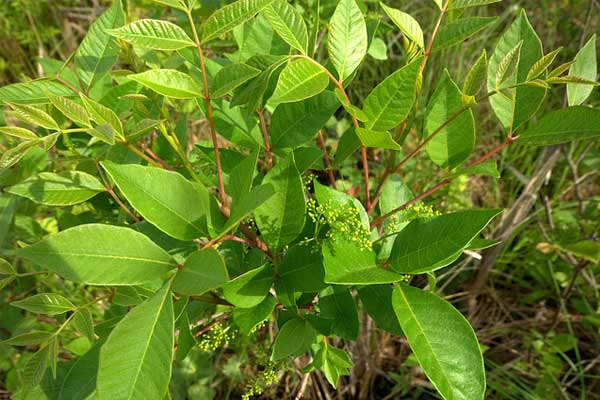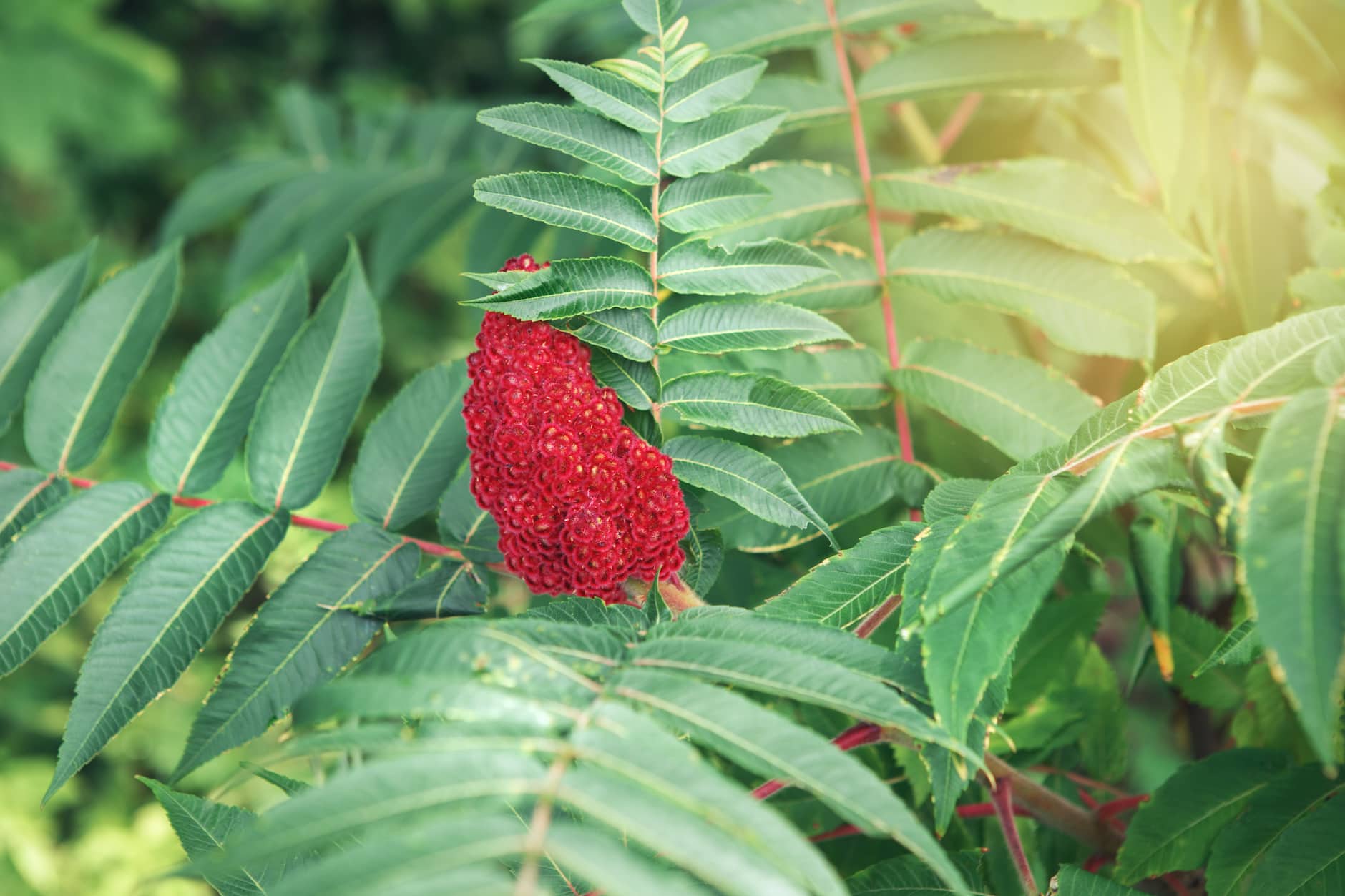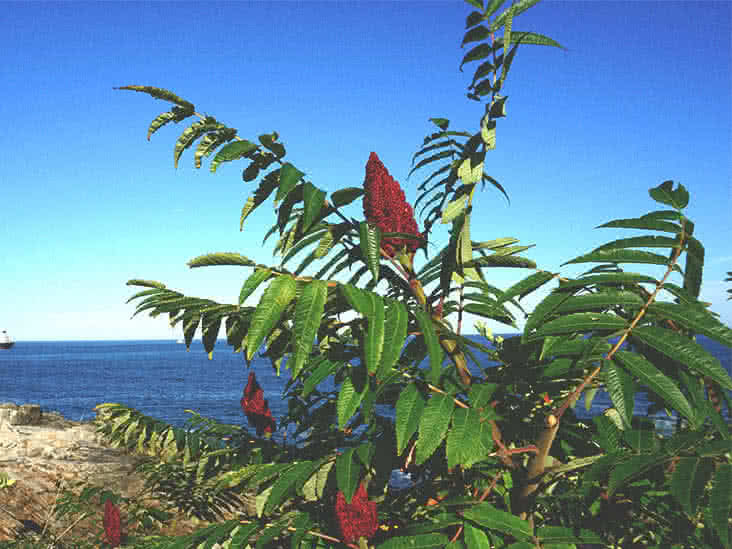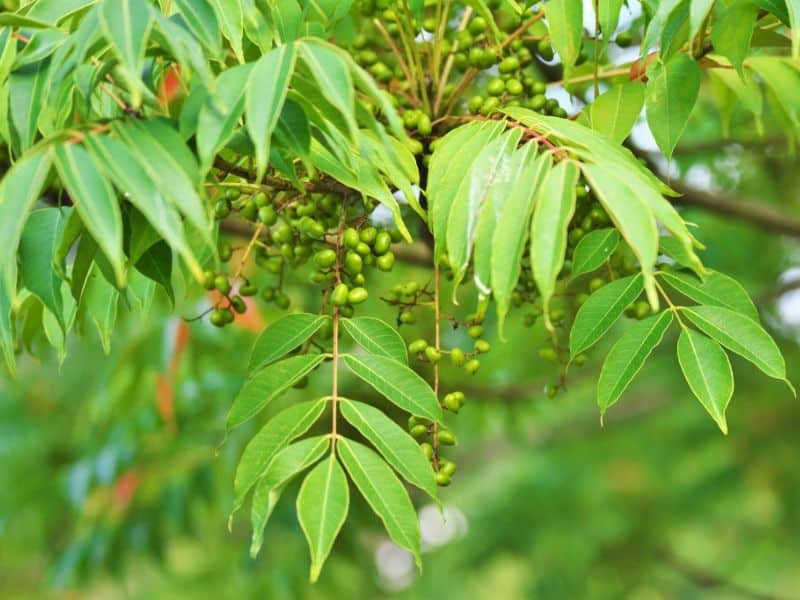african sumac tree poisonous
Poison Ivy Poison Oak. African sumac Rhus lancea is a drought-tolerant shade tree that grows in US.

Plants That Can Cause A Rash Poisonous Plants Plants Plant Rashes
The fragrant sumac is a short growing shrub that rarely grows taller than five feet.

. You need to be aware of this when you eat sumac for the first time. The fungus Phymatotrichopsis omnivora which is found in the. African sumacs are poisonous to humans.
Department of Agriculture Plant Hardiness Zones 8. The red or red-brown stems usually hold between 6 and 12 leaves plus. Double rows of leaves.
Some bad native Sumacs or Sumac relatives that you should know about are Poison Ivy Toxicodendron radicans formerly Rhus radicans and Poison Sumac Toxicodendron vernix formerly Rhus vernix. Poison sumac is a shrub or small tree that can grow as tall as 25 feet. Also people can be allergic to sumac just like everything else.
Refrain from burning any part of the tree. In one of the common names of ailanthus is sumac but these plants are quite different from each other. Every part of the tree contains urushiol oil which causes an allergic reaction to skin.
African sumac trees are susceptible to Texas root rot also known as cotton root rot or phymatotrichopsis root rot. I could not find African sumac listed in any of the allelopathic lists although sumac as a genus is listed. Not Poisonous Unlike its close relatives poison ivy oak and sumac the landscape sumacs do not cause itchy rashes.
But its a close relative of poison ivy Toxicodendron radicans. But it is easy to tell edible sumacs apart from the poison sumacs by looking at the. African sumacs are poisonous to humans.
They contain tannins phytols and three different compounds related to gallic acid which have antimicrobial activities. Non-Toxic to Dogs Non-Toxic to Cats Non-Toxic to Horses. North Africa and North America.
Rhus aromatica and poison sumac Toxicodendron vernix. An African Sumac tree is perfect for hot dry climates and for anyone that is looking for an attractive shade tree with a long lifespan. Sumac trees such as the staghorn sumac Rhus typhina smooth sumac Rhus glabra and fragrant sumac Rhus aromatica produce edible red berry-like drupes.
Moreover are sumac trees poisonous. Allergic dermatitis in humans usually not a problem in animals. Both plants can be responsible.
Texas Root Rot. African sumacs are poisonous to humans. Gardeners should never handle the tree without gloves and keep children away from the plant.
No African sumac Rhus lancea isnt poisonous to animals. But poison sumac Toxicodendron vernix is also a small tree with leaves like regular sumac. Poison sumac plants generally feature stems with two parallel rows of leaves.
Vine- and shrub-like poison ivy and oak have three distinct leaflets per leaf so there is no confusing those. Best planted in spring after the last frost sumac grows at a moderate rate. Every part of the tree contains urushiol oil which causes an allergic reaction to skin.
Poison sumac is characterized by. Larger sumac trees will often grow long and slender branches that tilt downward. Sumac seeds are widely used in Middle.
Petunias are also quite susceptible to juglone the poisonous compound in allelopathic plants. Reddish stems leaves that consist of 713 leaflets arranged in pairs with a single leaflet at the end elongated leaflets with a smooth velvety texture smooth edges and a V-shaped point bright orange leaves in the early spring that later become dark green and. They are easy to prune or shear and have minimal maintenance.
Chemical defenses in the leaves of sumacs are diverse and potent. Every part of the tree contains urushiol oil which causes an allergic reaction to skin. Poison sumac which grows in the Eastern US has white or gray berries where edible sumac has red brown purple or maroon fruit.
Gardeners should never handle the tree without gloves and keep children away from the plant. African sumacs are poisonous to humans. There is also a shrub called the poison sumac Toxicodendron vernix which produces small poisonous white berries.
1 It sports eye-catching red stems along with medium-sized green leaves which turn to a red-orange in the fall. Most types of sumac grow into a tree or shrub ranging between 5 and 20 feet in height. A Rhus lancea African Sumac can be trained to a single trunk or allowed to grow into a multi-trunk tree with a look that resembles an olive tree.
The arsenal of chemical defenses is so effective that only the sumac leaf beetle Blepharida rhois can eat the leaves of smooth sumac and fragrant sumac.

Wilderness Survival Picture Viewer Wilderness Survival Poisonous Plants Green Fruit

California Pepper Tree The Peppercorn Reference List By Gingerandnutmeg Pepper Tree Peppercorn Plants

The Seed Identification Web Page Poison Sumac Pictures Poisonous Plants Plants

Poison Sumac Tips For Identifying And Avoiding This Poisonous Plant

Acokanthera Plants Poisonous Plants Plant Identification

Wild Edibles Sumac Berries Farmer S Almanac

Syngonium Podophyllum African Evergreen Arrow Head Vine Arrowhead Vine Green Gold Naphthysis Nephth Toxic Plants For Cats Poisonous Plants Cat Safe Plants

Extreme Rare Alocasia Cyrtosperma Johnstonii Black Jack House Etsy Caladi

Pin By Brenda B On Flowers Plant Leaves Poisonous Plants Sumac

What Is The Difference Between Sumac And Poison Sumac Vine

Poison Sumac Rash Pictures And Treatment

Poison Sumac Rash Pictures And Treatment

Graphs Infographics Deadly Plants Poisonous Plants Wild Plants

How To Identify Remove And Treat Poison Sumac

Pin On Pet Poisons Plants Yikes



